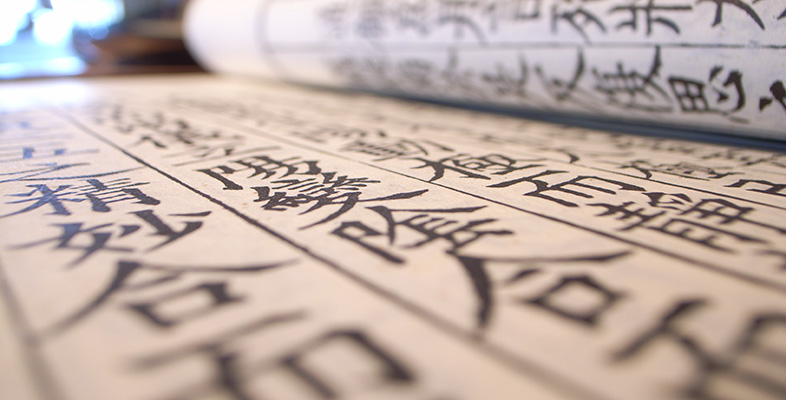1.4 Chinese characters
Speakers of different dialects, especially the southern dialects, often cannot understand each other when they speak. However, literate Chinese people can communicate with each other in writing, as they share a common script: 汉字 hàn zì (lit. Han characters).
The Chinese character script is believed to have originated from stylised pictures of physical objects, which evolved over the centuries into characters formed from strokes. The total number of Chinese characters is estimated at about 50,000, of which roughly 3000 are used for everyday purposes. This course teaches simplified characters, which were introduced by the Chinese government in the 1950s in an attempt to increase literacy.
Each character in written Chinese represents a syllable. A word in Chinese can consist of one character (e.g. 中 zhōng , central), two characters ( 中国 Zhōngguó , China) or three characters ( 中国人 zhōngguórén , Chinese person/people). In Chinese texts, there is no spacing between characters. Traditionally there was no punctuation either, but this has since been adopted.
There is no obvious correlation between how characters are written and how they are pronounced. For example, the following three characters, made up of very different strokes, are all pronounced jing, albeit with different tones: 京 (1st tone) means ‘capital’; 井 (3rd tone) means ‘well’ (as in a water well); and 净 (4th tone) means ‘clean’.
